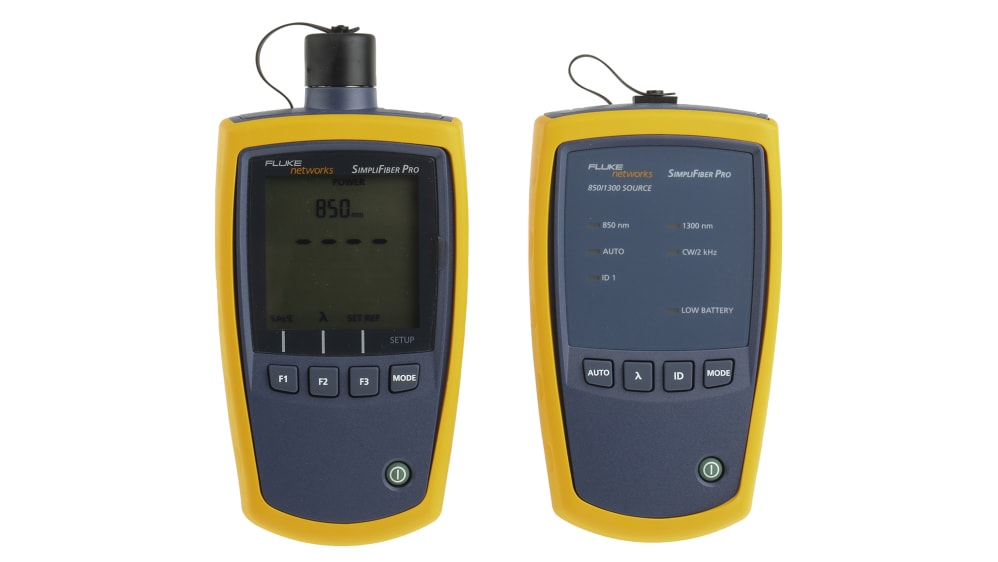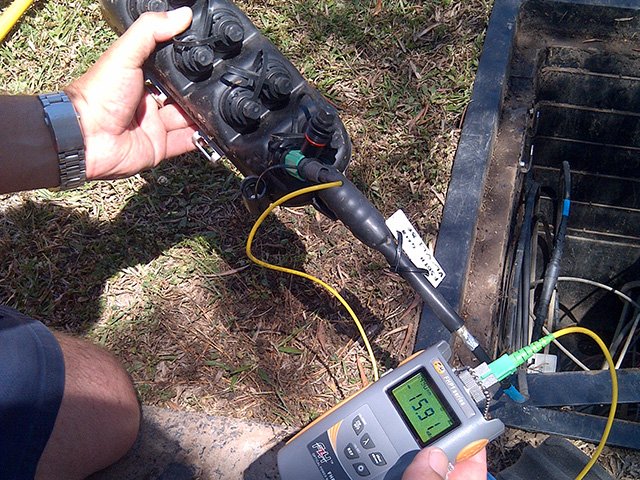High-quality ofda solutions provide precise fibre testing and consistent results.
High-quality ofda solutions provide precise fibre testing and consistent results.
Blog Article
Discover the Importance of Optical Fiber Screening in Modern Telecommunications
In the world of contemporary telecoms, the significance of optical fibre screening can not be overemphasized, as it offers as the foundation for guaranteeing network dependability and performance. What are the specific advantages that normal screening offers, and exactly how might it shape the future landscape of telecommunications?

Recognizing Optical Fiber Testing
Optical fiber testing is a vital process in telecoms that makes sure the honesty and efficiency of fibre optic networks. This screening incorporates a variety of procedures made to assess the physical and functional attributes of optical fibres - fibre testing equipment. Secret parameters analyzed include optical power loss, data transfer ability, and fault location, which are important for keeping top notch communication web links
The testing process usually includes the use of customized equipment such as Optical Time-Domain Reflectometers (OTDR) and Optical Power Meters. OTDRs are employed to recognize and characterize mistakes, splices, and adapters within the fibre, while power meters determine the transmitted light signal stamina to determine performance.
Furthermore, screening is conducted at numerous stages, consisting of during setup, upkeep, and troubleshooting, to ensure that the network satisfies industry criteria and operational demands. Conformity with standards set by companies like the International Telecommunication Union (ITU) and the Telecommunications Sector Association (TIA) is vital.
Advantages of Routine Testing
Normal screening of optical fibres yields numerous advantages that considerably enhance network dependability and performance. One of the primary benefits is the very early discovery of potential problems, such as breaks or destruction in the fiber, which can result in pricey downtime if left unaddressed (ofda). By recognizing these problems proactively, telecommunications service providers can lessen solution disturbances and ensure regular connection for their customers
Additionally, regular testing helps to maintain the integrity of signal high quality. As optical fibers age, their performance can be impacted by elements such as environmental conditions and physical tension. Regular evaluations permit the tracking of signal loss and general transmission effectiveness, ensuring that the network operates at optimum degrees.
One more substantial advantage is compliance with market criteria. Routine screening supports adherence to governing demands, thus mitigating legal and economic dangers connected with non-compliance. Additionally, it boosts the overall life-span of the fibre framework by helping with prompt upkeep and repair work.

Typical Examining Methods
Evaluating optical fibers uses different approaches to guarantee the stability and efficiency of telecoms networks. Among the most common methods is Optical Time Domain Name Reflectometry (OTDR), which assesses the entire length of the fibre by sending out a pulse of light and gauging the reflections triggered by flaws or breaks. This approach gives detailed information about pop over to this site the location and seriousness of faults.
One more common technique is using Optical Power Meters, which gauge the amount of light transferred with the fibre. This method assists identify the loss of signal stamina, making certain that it fulfills sector criteria. In Addition, Aesthetic Mistake Locators (VFL) are used to determine breaks or extreme bends in the fibre by forecasting a visible laser light into the cable.
Insertion loss testing is likewise essential, as it evaluates the loss of signal power arising from connections and entwines within the network. Additionally, making use of Polarization Mode Diffusion (PMD) screening analyzes the influence of fiber features on signal honesty.
Each of these techniques plays an important role in maintaining the efficiency and reliability of optical fiber networks, inevitably contributing to seamless telecoms operations.
Effect On Network Efficiency
The stability and performance of optical fiber networks directly influence total network performance. In modern telecommunications, the performance of information transmission relies greatly on the high quality of the optical fibers utilized. Any degradation in the fiber's condition-- whether as a result of physical damage, contamination, or too much bending-- can result in increased depletion and signal loss, dramatically affecting information stability and rate.
Routine optical fibre screening is vital to recognize and remedy potential problems prior to they materialize as network failures or downturns. Strategies such as Optical Time Domain Name Reflectometry (OTDR) and insertion loss screening enable professionals to gauge the performance of fibre web links accurately. These tests not just evaluate the physical problem of the fibres however additionally guarantee conformity with industry standards, therefore securing the network's integrity.
Furthermore, a properly maintained optical fiber network contributes to minimized operational prices and improved client satisfaction, as end-users experience fewer disruptions click to read more and greater information rates. Ultimately, the emphasis on rigorous optical fibre testing techniques acts as a foundation for maintaining robust telecommunications infrastructure, making sure that solution carriers can satisfy the expanding needs for transmission capacity and connectivity in today's digital age.
Future Trends in Evaluating
As we look ahead, advancements in technology are poised to reshape optical fibre testing in telecommunications. The increase of automation and expert system (AI) is expected to improve the efficiency and precision of testing procedures. Automated screening systems can perform comprehensive assessments with minimal human intervention, dramatically decreasing the capacity for mistakes and expediting time-to-deployment.
Additionally, the integration of equipment understanding formulas will certainly allow predictive maintenance, enabling network providers to foresee possible problems before they escalate right into failures. This positive approach not just improves network integrity but additionally maximizes operational costs.
One more emerging pattern is the development of mobile testing devices that supply real-time evaluation - optical fibre diameter analyser. These gadgets will encourage professionals to carry out on-site diagnostics rapidly, visit site facilitating quicker resolutions and enhancing solution quality
The development of 5G networks additionally necessitates the development of testing approaches. As bandwidth needs increase, traditional testing strategies may no much longer are enough. Cutting-edge services such as optical time-domain reflectometry (OTDR) and progressed spectral analysis will certainly become essential in ensuring the stability and efficiency of high-speed connections.

Final Thought
To conclude, optical fiber screening is important for ensuring the honesty and dependability of contemporary telecoms networks. Regular testing methods not just aid recognize potential problems such as signal loss and mistakes yet additionally contribute to improved network efficiency and customer contentment. As the need for seamless connectivity continues to grow, the fostering of sophisticated testing approaches will certainly play an important duty in keeping top quality network requirements and supporting the progressing landscape of telecoms.
Report this page